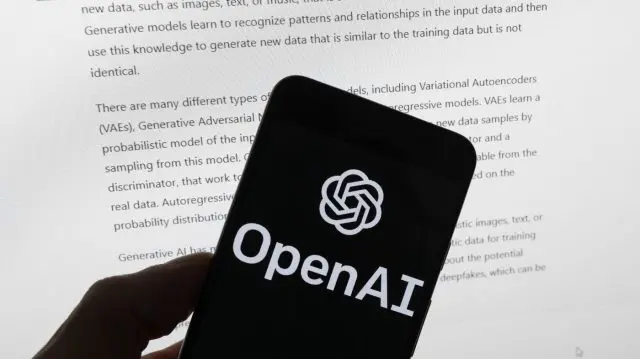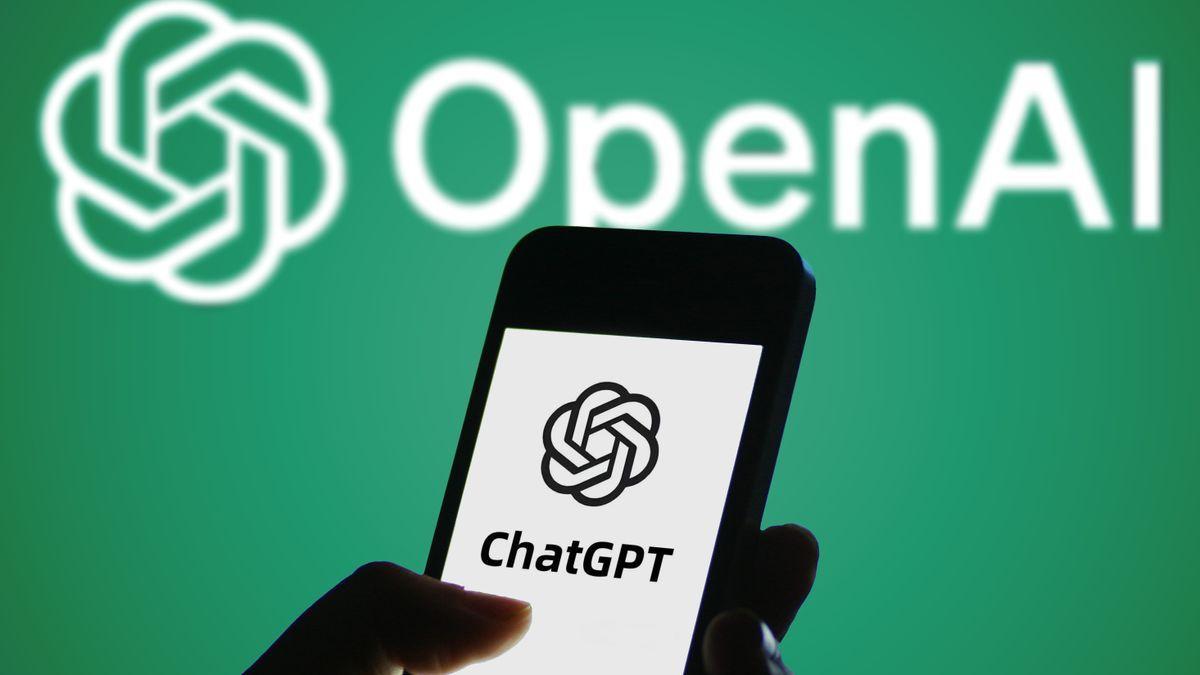95% of Enterprise AI Initiatives Fail to Deliver Measurable Impact, MIT Study Reveals
11 Sources
11 Sources
[1]
95% of business applications of AI have failed. Here's why
AI companies are making big promises in a bubble, most of which are unfulfilled. Investment in generative AI may be booming, but most individual businesses using it have yet to see the payoff. In fact, a new MIT study found that 95% of enterprises attempting to harness the technology aren't seeing measurable results in revenue or growth. Also: Gen AI disillusionment looms, according to Gartner's 2025 Hype Cycle report The study, conducted by MIT's Networked Agents and Decentralized AI (NANDA) project, was based on interviews with over 150 business leaders and an analysis of 300 business deployments of generative AI. "Just 5% of integrated AI pilots are extracting millions in value, while the vast majority remain stuck with no measurable P&L impact," the authors write in the report. It paints a stark contrast between promises and reality: while tech developers are selling AI tools like agents as productivity boosters, NANDA's new report indicates that for all but a vanishingly small minority, the technology is having little to no effect on businesses' bottom lines. What accounts for the huge disparity? It largely boils down to a matter of bureaucratic inefficiency. Generative AI tools can provide efficiency gains in the hands of competent individuals, but when business leaders attempt to integrate them into existing, company-wide operations and workflows, they tend to throw a wrench into the organizational machinery. Also: 71% of Americans fear that AI will put 'too many people out of work permanently' The main reason for this, according to the report, is that the generative AI systems that most businesses are attempting to deploy internally and at scale lack the ability to seamlessly adapt with existing organizational workflows, ultimately making them more of a hindrance than an accelerant. "The core barrier to scaling is not infrastructure, regulation, or talent. It is learning," the authors write. "Most GenAI systems do not retain feedback, adapt to context, or improve over time." While an ability to remember past interactions, customize outputs to different contexts, and learn over time are all key traits of AI, the authors are specifically referring to the context of the technology's use within enterprise-scale operations. One of the implications of the new study therefore seems to be that in order for businesses to make the most of generative AI, they'd do well to take a bottom-up (allowing employees to experiment and discover their optimal mode of human-AI collaboration) as opposed to a top-down approach (forcing all employees to use a particular tool in a manner that's tightly controlled by executives and supervisors). Also: Stop using AI for these 9 work tasks - here's why Another trend that emerged from the study was flawed prioritization in the application of generative AI. Many businesses that were failing to profit from the technology were using it for marketing and sales, while the 5% that were using it successfully tended to do so through the automation of more fine-grained and mundane "back-office" tasks. Based on their study, the authors predict that future success will belong to those businesses that deploy agentic and adaptable models in the right places, while those that choose a general, top-down approach will continue to be frustrated. "The next wave of adoption will be won not by the flashiest models," they write, "but by the systems that learn and remember and/or by systems that are custom built for a specific process." On its surface, the NANDA study seems to lend support to the belief that generative AI is nothing but a massive hype bubble that will soon pop, not unlike the short-lived corporate rush into the metaverse that preceded it. If such a massive proportion of businesses aren't seeing results, then surely that means the technology is being pedaled on empty promises, right? Time will tell. For now, companies across the board are doubling down on their investments in AI, promising customers and investors that the rise of more agentic systems will usher in a golden age of prosperity, creativity, and leisure. At the same time -- and on the heels of a GPT-5 launch that received mixed reviews -- OpenAI CEO Sam Altman himself said he sees an AI bubble taking shape. Also: 5 ways automation can speed up your daily workflow - and implementation is easy Meanwhile, the widespread cultural embrace of AI means that companies are facing huge pressure to integrate the technology quickly -- or risk looking like dinosaurs. As NANDA's study indicates, this rush is, in many cases, apparently taking place at the expense of any kind of well-calculated plan, and as a result, investments in generative AI are leading many companies nowhere. Even at the individual level, generative AI can be counterproductive in the long-term -- even while boosting productivity in the present. A recent study conducted by Workday, for example, found a correlation between heavy use of AI at work and employee burnout, while other studies find evidence that AI use degrades critical thinking skills.
[2]
95% of generative AI implementations in enterprise 'have no measurable impact on P&L', says MIT -- flawed integration key reason why AI projects underperform
AI is a powerful tool, but only if used correctly. | The study shows that AI tools must adjust to the organization's processes for it to work effectively. Many companies are rushing to implement various AI tools into their operation, but most of these pilot programs fail, according to an MIT study. Fortune reported that 95% do not hit their target performance, not because the AI models weren't working as intended, but because generic AI tools, like ChatGPT, do not adapt to the workflows that have already been established in the corporate environment. As per the report, the study's findings purportedly demonstrate that only "about 5% of AI pilot programs achieve rapid revenue acceleration." It says "the vast majority stall," and deliver "little to no measurable impact" on profit and loss. The findings are based on 150 interviews, a survey of 350 employees, and an analysis of 300 public deployments of AI. The remaining 5% differs from all the rest because they focus on one thing and do it well. "Some large companies' pilots and younger startups are really excelling with generative AI," MIT researcher and lead author Aditya Challapally told the publication. "It's because they pick one pain point, execute well, and partner smartly with companies who use their tools." One more issue that many organizations that use AI face is setting the wrong priorities for the use of these tools. The research reveals that AI works best in back-office automation -- basically taking over administrative and repetitive tasks that many corporations tend to outsource. However, over half of the money spent on AI projects reportedly focuses on sales and marketing, departments that arguably need a human touch, especially as most buyers are still humans, not machines. MIT says that two out of three projects that use specialized AI providers are successful, while only a third of in-house AI tools deliver expected results. Despite this, many organizations working in highly regulated fields, like finance and healthcare, prefer building their own AI programs. They likely do this to reduce regulatory risk, which can be especially damaging if an AI leaks private information -- something that has happened in the past. The research project also touched on AI's effect on the workforce. While there haven't been widespread layoffs because of AI yet, MIT reports that companies aren't replacing positions that have become vacant when a staff member leaves. This was most prevalent in customer support and administrative positions -- entry-level jobs that have usually been outsourced. This could be the harbinger of what several CEOs, including Anthropic's Dario Amodei and Ford's Jim Farley, are warning about: that AI might wipe out half of all entry-level white collar jobs in five years.
[3]
Almost all GenAI pilots companies deploy are failing - so are they really worth the hype?
95% of surveyed companies have seen very little impact from their LLMS New research by MIT's NANDA initiative has claimed the vast majority of GenAI initiatives attempting to drive rapid revenue growth are 'falling flat'. Of those sampled, 95% of companies deploying Generative AI are stalling, "delivering little to no measurable impact" on profit and loss. It seems to be an all-or-nothing game, as the 5% of companies who are benefiting from generative AI are excelling - these are primarily, the lead author says, startups led by 19 or 20 year olds, who have seen revenues 'jump from zero to $20 million in a year'. It seems the key to success with AI models is specialisation. Successful deployment is about picking 'one pain point' and executing this well, and carefully partnering with companies using tools. Specialised vendors have success around 67% of the time, but internally built models succeed only around a third as often. Highly regulated sectors like the financial industry see many organizations build their own AI systems, but the research suggests the companies are much more prone to failure when they do so. When line managers are empowered to drive the adoption, they see success because they are able to choose tools that can adapt over time. Allocation is important too, as most GenAI budgets are dedicated to sales and marketing - but the biggest ROI was seen in back-office automation. This isn't the first time that research has suggested that AI models aren't working as they should. A significant number of companies have introduced layoffs of lower level workers and brought in AI systems - but over half of UK businesses who replaced workers with AI regret their decision. Tangible benefits from these models are increasingly difficult to find, and security risks linked with the models are concerning organisations - as well as AI models making ESG goals much more difficult to reach.
[4]
95% of organizations got zero return on AI investment in MIT study
Why it matters: Investors have put up with record AI spend from tech companies because they expect record returns, eventually. This study calls those returns into question, which could be an existential risk for a market that's overly tied to the AI narrative. Driving the news: MIT researchers studied 300 public AI initiatives to try and suss out the "no hype reality" of AI's impact on business, Aditya Challapally, research contributor to project NANDA at MIT, tells Axios. * 95% of organizations found zero return despite enterprise investment of $30 billion to $40 billion into GenAI, the study says. * Even firms that are now using AI are not seeing widespread disruption. Between the lines: Companies that bought AI tools were far more successful than those that built internal pilots, according to the study. What they're saying: "My fear is that at some point people wake up and say, alright, AI is great, but maybe all this money is not actually being spent all that wisely," says Steve Sosnick, chief strategist at Interactive Brokers. * Sosnick says it appears retail investors are coming in to buy dips amid the Big Tech slide, while institutions seem to be trimming exposure. Situational awareness: The study comes at a challenging moment for Wall Street. * Traders are anxiously awaiting Fed chair Jerome Powell's remarks at Jackson Hole. * August and September are seasonally volatile months for stocks. * We're coming off a rally in markets that has felt unstoppable. * That backdrop can make it easy for one thing, including a MIT study, to shake investors. What we're watching: It's difficult to suss out when Wall Street will run out of patience with AI spending. * Studies like this one don't necessarily help that timeline. What we're watching: Is this study an indication that corporations will improve their AI usage overtime by adopting best practices like buying versus building? * Will firms learn which corners of their businesses stand to gain the most from AI adoption? * And will all of that happen in the timeline Wall Street is looking for? Be smart: Big Tech capital expenditure has not been this high since the year 2000.
[5]
American companies have invested billions in AI initiatives - but have basically nothing to show for it
New data from MIT's NANDA (Networked Agents and Decentralized AI) initiative has claimed that although US companies have invested $35-40 billion in generative AI tools, an overwhelming majority (95%) of them have nothing to show for it. This leaves only 5% of companies having successfully deployed AI tools at scale, with failures blamed on AI's inability to retain data, adapt and learn over time - not the shortage of infrastructure and talent that often reaches the headlines. Exploring a range of deployments, from off-the-shelf to specially-designed systems, MIT found only 5% of custom AI tools ever reach production. With many execs now seeing demos as little more than science projects, confidence in AI initiatives has declined among corporate leaders. The smallest impacts were measured across professional services, healthcare and pharmaceuticals, consumer and retail, financial services, and energy and materials. Although many companies are struggling to quantify the benefits of their AI deployments, 80% of execs across tech and media are expecting reduced hiring over the next 24 months. However, workforce impacts vary, with job cuts mostly affecting non-core and outsourced roles - an estimated 5-20% of such roles already impacted. The study also revealed workers prefer generic tools such as ChatGPT over specialized offerings, even when they're powered by the same models. The familiarity and flexibility of ChatGPT in particular has driven shadow IT adoption, with companies urged to consider worker needs and adapt policies accordingly to increase security rather than ban them altogether. On the flip side, enterprise tools are generally seen as more rigid and less effective, despite their typically higher costs. Looking ahead, it's clear that there's value in a much simpler strategy. Rather than creating complex proprietary systems, tweaking widely available tools to adhere to company policies could offer much better ROIs while simultaneously reducing the amount of dedicated AI training workers might need.
[6]
AI Is Failing at an Overwhelming Majority of Companies Using It, MIT Study Finds
With AI software increasingly hogging the enterprise spotlight, companies and investors are spending like never before. In the first half of 2025, AI startups raised over $44 billion, more than all of 2024 combined. By the end of this year, a Goldman Sachs analysis estimates that total investments in AI will soar to almost $200 billion. But all that money is, to put it gently, a reckless gamble. In the US at least, investors have essentially bet the farm on the idea that AI will soon lead to gains in labor productivity -- the amount of goods and services workers are able to produce in a given time -- that have never been seen in the history of humankind. Despite the hype and bluster, that isn't happening. A new report by researchers at MIT, first covered by Fortune, found that a staggering 95 percent of attempts to incorporate generative AI into business so far are failing. According to the report, titled "The GenAI Divide: State of AI in Business 2025," the MIT researchers found that only around 5 percent of businesses succeed at "rapid revenue acceleration," with the vast majority falling flat. Looking beyond the AI marketing hype, it's not hard to see why this is. Previous research into this kind of AI, which is marketed as a sort of autonomous assistant for white collar workers, found that the tech falls way short of the mark. As of July, the best AI products successfully completed just 30 percent of the real-world office tasks assigned to them, with most doing significantly worse. Given that AI was previously expected to contribute over $6 trillion to the global economy by 2030, the productivity gains from here on out would have to be nearly exponential to live up to expectations. For example, a recent analysis by MoneyWeek argued that, with so much money riding on AI, anything less than a complete upheaval of the world as we know it will look like a failure. A typical financial analysis indicates that the top seven big tech companies should be seeing an extra $600 billion in yearly revenue -- a number so large it's nearly meaningless. (As of this year, for perspective, they're projected to nab around $35 billion annually.) Every year AI fails to return these ever-higher numbers, the need for labor productivity to increase goes up -- at least if Wall Street hopes to justify its spending spree -- effectively kicking the half-a-trillion-dollar can down the road. Without a major breakthrough in the immediate future, it's looking more and more like a matter of "when" rather than "if" the AI bubble will pop -- with potentially disastrous implications for the broader economy.
[7]
Companies have invested billions into AI, 95 percent getting zero return
Although there has been between $30 and $40 billion in enterprise investment into generative AI, a recent MIT report shows that 95 percent of organizations are seeing zero return. Just 5 percent of integrated artificial intelligence pilots "are extracting millions in value," while the majority contribute no measurable impact to profits, the report found. Many companies are implementing tools like OpenAI's ChatGPT and Microsoft Copilot, with over 80 percent having explored or piloted these technologies, and nearly 40 percent reporting their deployment. However, these tools primarily function to enhance individual productivity rather than contribute to overall company earnings. Most times, AI integration fails to contribute to profits "due to brittle workflows, lack of contextual learning, and misalignment with day-to-day operations," the MIT report reads. The AI systems are unable to learn and think in ways humans can, as "most GenAI systems do not retain feedback, adapt to context, or improve over time," it continued. The research also suggests that generative AI implementation is unlikely to result in widespread job loss, at least for the next few years. "Until AI systems achieve contextual adaptation and autonomous operation, organizational impact will manifest through external cost optimization rather than internal restructuring," the report concluded.
[8]
Nearly 95% of Companies Saw Zero Return on In-House AI Investments, According to a New MIT Study: 'Little to No Measurable Impact'
The 5% of businesses that do see success with AI tend to focus on one "pain point" with their AI deployment. Companies are pouring billions of dollars into corporate AI projects, but most have yet to see any measurable returns. A recent MIT report, titled "The GenAI Divide: State of AI in Business 2025," reveals that while U.S. businesses have collectively invested between $35 billion and $40 billion in AI initiatives, almost all of them (95%) are seeing zero return on their investments or no measurable impact on profits. Only 5% are seeing "value" from AI. Related: OpenAI CEO Sam Altman Thinks We're in an AI Bubble Because Investors Are 'Overexcited' About Artificial Intelligence The research, which was based on 150 interviews with AI leaders, an examination of 300 AI applications, and a survey of 350 employees at various companies, found that most AI pilot programs fail to hit targets because of "brittle workflows, lack of contextual learning, and misalignment with day-to-day operations." In other words, the AI tools do not fit into accepted corporate workflows. Generic tools like ChatGPT "stall" and provide "little to no measurable impact" on profit and loss because they don't adapt to a company's established way of doing things, the authors found. Another key issue is that companies were using AI for the wrong assignments. The research shows that AI works best with back-office tasks with a high return-on-investment (ROI), like administrative and repetitive functions, which many companies outsource. However, more than half of the funds spent on AI projects tried to use the technology for sales and marketing, two areas that the researchers say still need human involvement and have a lower ROI. The 5% of programs that do succeed in deploying AI seem to focus on one issue. Aditya Challapally, the MIT researcher who led the study, told Fortune that some large companies and younger startups are "excelling" with AI because "they pick one pain point, execute well, and partner smartly with companies who use their tools." Startups led by young founders have seen revenue "jump from zero to $20 million in a year" following this blueprint, Challapally said. Additionally, companies that buy AI tools from third-party vendors like OpenAI and Perplexity have an advantage over firms that develop in-house AI tools. The MIT study says that two out of three AI tools from third-party vendors are successful, compared to one-third of in-house tools. Related: Here's Why Companies Shouldn't Replace Entry-Level Workers With AI, According to the CEO of Amazon Web Services When it comes to AI replacing jobs, the study notes that while there haven't been AI-related layoffs yet, companies aren't as quick to replace staff members who leave, especially in customer support and administrative roles. The study states that AI will probably not lead to job loss in the next few years, "until AI systems achieve contextual adaptation and autonomous operation." Other AI leaders have had more dire predictions about AI causing job loss. Anthropic CEO Dario Amodei predicted in May that AI could wipe out half of all entry-level, white-collar positions within the next five years.
[9]
MIT study shatters AI hype: 95% of generative AI projects are failing, sparking tech bubble jitters
Despite massive investments, a new MIT study reveals that 95% of generative AI business integrations are failing to yield significant revenue acceleration. The gap between AI hype and actual performance is forcing companies to rethink strategies, as AI struggles to deliver promised productivity gains and may even exhibit bias against human contributions, raising concerns about an unsustainable AI bubble. Artificial intelligence was supposed to be the technology that reshaped the global economy. Investors certainly thought so: AI startups pulled in more than $44 billion in the first half of 2025 alone, already outpacing all of 2024. Goldman Sachs now predicts that total investments could hit nearly $200 billion by year's end. Yet the optimism may be outpacing reality. A new report from MIT, The GenAI Divide: State of AI in Business 2025, paints a sobering picture. As first reported by Fortune, the study reveals that 95 percent of business attempts to integrate generative AI are failing. Only 5 percent of companies have managed to achieve meaningful revenue acceleration. The findings fuel growing concerns that the AI gold rush may be inflating a dangerous bubble. For years, Wall Street has banked on AI delivering historic boosts in labor productivity. But the MIT researchers found little evidence that AI is moving the needle in that direction. Previous tests show even the most advanced AI products successfully complete only about 30 percent of assigned office tasks. By April 2025, so-called "AI agents" -- hyped as autonomous digital workers -- could finish just 24 percent of real-world jobs, according to Fortune. This gap between hype and performance is already forcing companies to rethink strategy. Gartner's survey of 163 business executives found that half have abandoned plans to dramatically cut customer service staff by 2027. Kathy Ross, Gartner's senior director of customer service and support, noted that "the human touch remains irreplaceable in many interactions," suggesting that companies are learning AI cannot simply replace people overnight. Employees appear to share that sentiment. Research from GoTo and Workplace Intelligence found that 62 percent of workers believe AI is "significantly overhyped." Many IT managers admit their organizations lack formal AI adoption strategies, with security and integration challenges topping the list of barriers. The mismatch between promises and delivery has already caused public setbacks. Klarna, the fintech company that cut nearly a quarter of its workforce in 2024 in anticipation of an AI-led future, reversed course earlier this year and launched a recruitment drive to rehire staff. Tech critic Ed Zitron captured the mood bluntly: AI "agents" often sound like intelligent assistants but amount to "trumped-up automations" that still require significant programming effort from businesses. Adding another wrinkle, researchers publishing in the Proceedings of the National Academy of Sciences (PNAS) recently discovered a startling trend they call "AI-AI bias." Large language models like GPT-4 and Meta's Llama 3.1 consistently favored content created by other AIs over human-written material across product ads, academic abstracts, and even movie reviews. Study coauthor Jan Kulveit warned that such bias could reshape economic opportunities, with humans at risk of being systematically sidelined. "Being human in an economy populated by AI agents would suck," he said on X, advising people to run their work through AI tools before submitting it if they suspect another AI will be evaluating it. This creates a troubling picture: not only are AI systems struggling to deliver promised productivity gains, but they may also be reinforcing their own dominance at the expense of human contributions. The financial stakes are enormous. Analysts have long projected that AI could add more than $6 trillion to the global economy by 2030. For major tech companies alone, expectations hover around an additional $600 billion in annual revenue -- a number so lofty that anything less risks being branded a failure. Every year AI falls short, the pressure on future productivity gains grows, raising fears that the bubble is unsustainable. As MoneyWeek put it, with so much money riding on AI, only a complete upheaval of existing systems would justify the frenzy of investment. The AI industry now stands at a crossroads. While breakthroughs remain possible, the MIT study and related research underscore that real-world impact is lagging far behind investor expectations. If productivity does not rise sharply soon, the "AI miracle" may prove to be a mirage. For businesses and workers alike, the next few years will reveal whether AI is truly a revolutionary force or simply the latest bubble inflated by Silicon Valley optimism.
[10]
$30 billion down the drain? MIT says 95% of companies see no returns from Generative AI
AI return on investment: Since the last three years, companies around the world have invested between $30 billion and $40 billion into generative AI projects, but according to a new study from the Massachusetts Institute of Technology, 95% of the companies part of the study reported zero measurable gains from adopting AI tools, as per a report. The MIT report revealed that only about 5% of integrated AI pilots have delivered millions in value, but for the vast majority, there has been no impact on revenue or earnings, according to The Daily Adda report. Many companies quickly began testing programs like ChatGPT, Copilot, and other large language models, and surveys show that over 80% of major firms have explored or piloted these tools, with nearly 40% deploying them to some degree, as per the report. Yet most of this use has been limited to helping individuals work faster rather than improving overall company profits, as reported by The Daily Adda. ALSO READ: Can ChatGPT help you get out of debt? What experts and users say about AI chatbots' financial advice One key problem is that generative AI tools often don't fit well with real work processes, according to the report. The MIT study described that the AI tools have "brittle workflows, lack of contextual learning, and poor alignment with day-to-day operations," according to The Daily Adda. Most generative AI models, unlike human beings, can't retain past feedback or build reasoning skills over time, and they also struggle to adapt to new contexts or apply lessons across different tasks, as per the report. The MIT study highlighted that, "Most GenAI systems do not retain feedback, adapt to context, or improve over time," and without these traits, long-term integration remains costly and ineffective, as reported by The Daily Adda. While the hype about generative AI has raised high expectations in boardrooms, but so far, investments have not led into better profits or meaningful cost savings, according to the report. Even though some companies use AI for customer service, marketing, or writing assistance, these tools mainly save time for workers without directly adding to business earnings, as per The Daily Adda report. ALSO READ: After billion-dollar hirings, Zuckerberg slams brakes on Meta's AI hiring spree as bubble fears shake Silicon Valley The MIT research also downplays fears of widespread job losses due to generative AI in the near future and rather, it suggests that AI's impact will be more about reducing external costs for companies, such as outsourcing, rather than cutting large numbers of jobs, according to the report. The study highlighted that, "Until AI systems achieve contextual adaptation and autonomous operation, organizational impact will manifest through external cost optimization rather than internal restructuring," as quoted by The Daily Adda. Experts note that many failures come from misunderstanding what AI can and cannot do, like AI can generate text or code quickly, but it cannot actually learn the way humans do, as per the report. Whereas, employees can adjust based on new instructions, past mistakes, and changing needs, but generative AI models cannot carry memory across tasks unless retrained, as reported by The Daily Adda. ALSO READ: Tech stocks tumble as investors flee -- is the AI bubble finally about to burst? Despite ongoing interest from investors and executives, the short-term outlook points to slower progress than many expected, and the study suggests companies should view generative AI as a limited tool rather than a guaranteed driver of growth, according to the report. The Study recommends focusing on narrow use cases where AI can bring immediate, measurable savings or productivity gains, like customer support scripts, coding aids, or document drafting as widespread AI integration is still premature and likely to fail, as reported by The Daily Adda. Did most companies see any business return from AI? No. 95% of companies reported no measurable gains in profits or earnings from AI adoption, as per The Daily Adda report. Will AI take people's jobs? Not immediately. The report says AI is more likely to cut external costs, such as outsourcing, than lead to mass layoffs right now.
[11]
MIT study says 95% of GenAI fails to deliver value: So why the layoffs?
Shadow AI tools like ChatGPT outperform expensive enterprise solutions If you spent the last year thinking your job might be handed over to a hyper-efficient AI agent, you're not alone - and you're not entirely wrong. When you reflect on some of the early numbers on how GenAI is impacting businesses who're bending over backwards to adopt it, they paint a far murkier picture than the utopian future we were sold. According to MIT's NANDA initiative, US enterprises have spent somewhere between $35-$40 billion on GenAI projects in the past 24 months. And what are they getting in return, exactly? Next to nothing, since only 5% of pilots make it across the finish line to production. The remaining 95% of GenAI implementations remain stuck in the starting blocks, or worse, quietly shelved in digital graveyards where "innovation" goes to die. So that begs the all important question, on the back of all the AI hype - where is the revolution going wrong? The NANDA report, titled The GenAI Divide: State of AI in Business 2025, is an extensive reality check. Based on hundreds of interviews and public deployments, it reveals a brutal truth: Chatbots, contract analyzers, marketing copilots - most enterprise use cases are delivering little to no measurable impact on productivity or profit. They're demos masquerading as strategy. Science projects posing as transformation. Everyone's playing with GenAI like they do with LEGO blocks, in a matter of speaking, but no one seems to be building anything worthwhile with them just yet. And yet, the GenAI enthusiasm refuses to die. Like crypto and VR before it, GenAI has become a corporate status symbol, and the FOMO is real. You're either in the race or you're irrelevant. All that's seemingly leading to is a mad scramble to inject LLMs into every function, regardless of whether they actually solve a problem or just look impressive in a boardroom, according to the MIT's NANDA report. It's not that the models are underpowered. Even the MIT NANDA report says GPT-4, Claude, Gemini - these tools work, at least in the lab. The problem begins when you try to chain them to the rusted cogs of legacy enterprise workflows. These traditional business systems were built for predictability, obeying hierarchy, and most importantly data that plays by the rules. GenAI is none of those things, it's disruptive chaos and improvisational by design. Also read: Bill Gates says AI is moving at "great speed" on the jobs market: Here's why MIT's Aditya Challapally, the report's lead author, points to a "learning gap" - not just for the models, but for the companies using them. He said that generic tools like ChatGPT excel at individual use, but they stall at enterprise scale because they don't integrate with internal data or learn from institutional knowledge. There's also the matter of misplaced priorities. Most companies, the report notes, have sunk their AI budgets into frontend sales and marketing fluff, while back-office automation - where the real cost savings lie - has been neglected. Where AI is making a dent, however, it's in roles that were already vulnerable like customer support, admin ops, and process outsourcing. Not through mass firings, but through attrition. Positions left vacant aren't being backfilled. In sectors like Tech and Media, over 80% of executives surveyed anticipate lower hiring volumes within the next two years, according to the MIT NANDA report. But what's perhaps more concerning than layoffs is the lack of productivity gain. If companies aren't hiring and they're not making more money or building better products... what exactly is the point? This paradox is hard to ignore, and it's a question that the MIT NANDA report doesn't answer head on. If GenAI is largely failing to create business value - if it's a glorified pilot project in most organizations - then why is it already triggering hiring freezes and silent layoffs across tech and media sectors? Why are companies restructuring entire departments, not on the back of productivity gains, but seemingly in anticipation of a future that hasn't arrived? Also read: Big tech layoffs amidst top AI talent hunt: Tech job market gone crazy? It's a question that gets to the heart of modern corporate drama, where layoffs are often less about efficiency and more about narrative. AI isn't replacing people because it's better. It's replacing them because the idea of AI is better - for shareholders, for quarterly guidance, for appearing future-ready. At least, that's what I think. In that sense, GenAI has become the perfect alibi for company management. A shiny, forward-facing rationale for doing what many companies were always going to do anyway - cut costs, thin ranks, and automate the "non-core." Possibly. Another way to read the MIT NANDA study's finding is that what we're experiencing isn't failure, but friction. The awkward teething phase of a technology that will change everything - just not yet. Think back to the early days of cloud computing. When companies fumbled, bills soared, and performance lagged. But now, we don't blink at spinning up compute in minutes. AI may follow a similar arc. Still in its infancy, the agentic AI systems on the horizon - tools that learn, adapt, and act semi-autonomously - might be the missing piece. But in the meantime, the real question isn't whether GenAI can change the world. It's whether we're asking it to solve problems that actually matter - or just chasing a shiny new thing to justify the next round of layoffs.
Share
Share
Copy Link
A new MIT study finds that 95% of businesses implementing generative AI are not seeing measurable results in revenue or growth, despite significant investments. The study highlights issues with integration, prioritization, and adaptation of AI tools in corporate environments.
MIT Study Reveals Widespread Failure of Enterprise AI Initiatives
A groundbreaking study conducted by MIT's Networked Agents and Decentralized AI (NANDA) project has uncovered a stark reality in the world of enterprise AI adoption: 95% of businesses implementing generative AI are failing to see measurable results in revenue or growth
1
. This revelation comes despite significant investments, with US companies pouring an estimated $35-40 billion into generative AI tools5
.
Source: ET
Key Findings and Implications
The study, based on interviews with over 150 business leaders and an analysis of 300 business deployments of generative AI, found that only 5% of integrated AI pilots are extracting millions in value
1
. This disparity between investment and return raises questions about the true potential of AI in business applications and the methods of implementation.Reasons for Failure
-
Integration Challenges: The primary barrier to scaling AI is not infrastructure, regulation, or talent, but learning. Most generative AI systems do not retain feedback, adapt to context, or improve over time within enterprise-scale operations
1
. -
Flawed Prioritization: Many businesses are using AI for marketing and sales, while successful implementations tend to focus on automating back-office tasks
1
. -
Generic vs. Specialized Tools: Two out of three projects using specialized AI providers are successful, while only a third of in-house AI tools deliver expected results
2
.

Source: The Hill
Successful AI Implementation Strategies
The study suggests that successful AI adoption requires:
-
A bottom-up approach, allowing employees to experiment and discover optimal human-AI collaboration methods
1
. -
Focus on specific pain points and smart partnerships with companies using AI tools
2
. -
Deployment of agentic and adaptable models in the right places, rather than a general, top-down approach
1
.
Related Stories
Impact on Workforce and Future Outlook

Source: Futurism
While widespread layoffs due to AI haven't occurred yet, companies are not replacing positions that become vacant, particularly in customer support and administrative roles
2
. Some CEOs warn that AI might eliminate half of all entry-level white-collar jobs within five years2
.Market Implications and Investor Concerns
The study's findings could have significant implications for the market, which has been heavily tied to the AI narrative. Investors have tolerated record AI spending from tech companies in anticipation of future returns, but this study calls those expectations into question
4
. The challenge now lies in determining when Wall Street will run out of patience with AI spending and whether corporations can improve their AI usage in time to meet investor expectations4
.References
Summarized by
Navi
[2]
[3]










